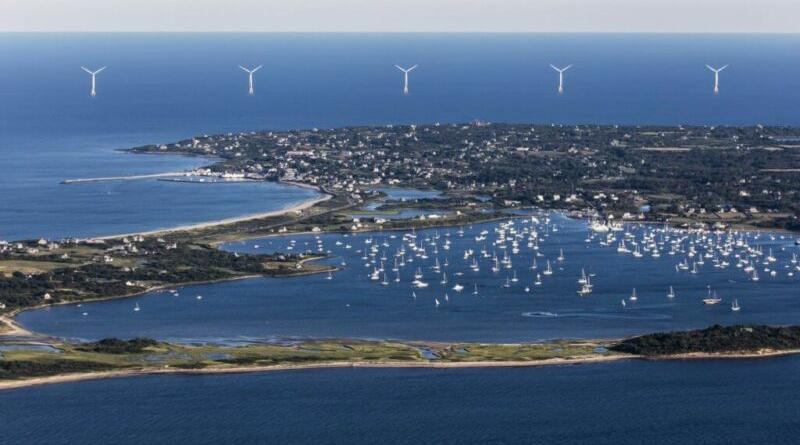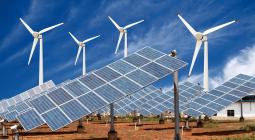US government sees renewables passing natural gas in 20 years.

....but renewables' prices seem to make the report's projections obsolete already.
Each year, the US Energy Information Agency is required to track trends in the nation's energy markets and project those trends forward. Projections based on 2019's trends were released this week, and for the first time, the EIA's default projection places renewables as the largest single source of electricity generation, with renewables surpassing natural gas somewhere around 2040.
These reports are very conservative due to some of the assumptions that are included in the projections, and they've done a terrible job projecting the rapid growth of renewable power. And despite the current report showing steady growth of renewables, there are indications it may still be underestimating renewables' potential. But the report is still worth looking at, as it can help to understand how more realistic assumptions could change the future direction of the United States' energy mix.
How to project
Some of the issues with the EIA's projections are baked into the system. For example, the reports are required to assume existing government policies are the only ones that apply. So while there is some talk of extending tax credits for renewable energy facilities, which has happened in the past, the report assumes that these policies will terminate in the near future as planned.
The issues are more pronounced when you consider the radical changes in policies that have occurred over the last few presidential administrations. Following a Bush administration that did nothing regarding climate change, the Obama EPA attempted to limit carbon emissions. The Trump administration has now reversed course and made attempts to increase the country's carbon emissions. All of the Democratic candidates hoping to run against Trump are promising to reverse course again. The growing public awareness of the impacts of climate change suggest that some sort of emissions policy is inevitable—but the report has to assume none will be put in place before 2050.
That said, this year's projections also appear to be based on some odd assumptions. For one, the report includes a scenario, termed "high renewable prices," that assumes the ongoing reductions in renewable energy's cost will simply stop tomorrow. This seems less "high" and more "completely unrealistic."
Even the midline scenario uses projections of renewable prices that start with wind power at roughly 25 percent higher than that of efficient natural gas plants, with the two seeing parallel price drops over the study period. Even in the "low renewable cost" scenario, wind doesn't reach parity until nearly 2040.
What about subsidies?
But elsewhere in the report, an analysis of the levelized cost of electricity (meant to remove the impact of subsidies) shows both photovoltaics and onshore wind will be price-competitive with the most efficient natural gas plants by 2025. This is in keeping with estimates from other sources, many of which indicate that the two have already reached price parity. The reason for this discrepancy isn't clear, although it may have to do with building turbines at sites where the wind resources are lower.
That situation can arise when state renewable mandates drive installations. But the report indicates that we're installing more than double the amount of renewable generation than is required by state mandates, and that gap is expected to be maintained for the entire duration of the 2020-2050 period.
Seeing the future
Given that potential limitation, what does the report see as likely to drive the future of the US energy economy? One of the major factors is fracking. By 2050, the EIA expects that 90 percent of the natural gas produced in the US will come from fracking. The growth in the production of fracked gas will outpace demand for it, helping to maintain the US as a net exporter of energy.
The slow demand will come in part because US electricity demand grows extremely slowly. Due to increased efficiency, demand has been growing at under 1 percent for over a decade. The report expects that demand will only ramp up slowly over the course of the next few decades. One consequence is that less economic forms of electricity production will be squeezed out of the market by the growth of natural gas and renewables. All but the largest and most efficient coal and nuclear plants are expected to be shut by 2030. From there, however, the report projects that the remaining plants will continue to operate through 2050.
This would see the United States' nuclear capacity drop from 98GW to 79GW. Production from coal remains slightly higher after seeing a drop of 25 percent over the next five years.
Meanwhile, past regulations that boosted the fuel economy of passenger vehicles will continue to pay dividends in terms of reducing the amount of petroleum consumed in the US. That drop is also in part because the Trump administration's attempts to loosen automobile fuel economy standards haven't been formalized yet. As a result, the report projects that automobile fuel economy improves over the period. This is also driven by the EIA projecting that cars sales will end up passing those of light trucks and SUVs in the middle of the 2020-2050 period, reversing a long-standing trend. Also in the "possibly unrealistic" category is the fact that electric vehicles are projected to occupy a small niche that doesn't really expand out to 2050. Hybrids gain market share, but most of that change is swallowed up by the growth in the total number of cars on the road.
Air travel and biofuel
The net result is that the total consumption of energy for transport drops slightly out to 2040 before picking up again due to growth in the total number of vehicle miles traveled. Another contributor is the rise of air travel, with the total amount of fuel consumed going up by 30 percent and the rise in miles traveled offsetting increased engine efficiency.
The report does see some of the emissions from transportation being offset by increased biofuel production, with the total share of biofuels increasing. But the amount of the increase—along with just about everything else to do with the transportation sector—is heavily dependent on the price of oil, which remains volatile. Anything that raises the price will reduce miles traveled and increase the economic viability of biofuels.
A couple of other factors are projected to play large roles in future energy uses. The ultimate dominance of the LED, already in progress, will make domestic and commercial buildings significantly more efficient. And the low cost of electricity and chemical feedstocks based on fossil fuels will help contribute to a steady growth in industrial energy use.
Carbon issues
Overall, the report projects that US carbon emissions will remain stable at about five gigatonnes over the entire period, with a slight drop coming primarily in the next few years. The change, however, is somewhat sensitive to economic growth, with the difference between high- and low-growth scenarios being about a gigatonne. Low-cost renewables will also allow emissions to drop during this period.
But that apparent stability hides some significant changes. Within the last five years, transportation passed electric power as the largest source of carbon emissions in the US. The rise of industrial emissions and continued drop of electrical power emissions will combine to leave them roughly equal in impact by 2050. And the drop in carbon intensity per energy consumed has left us at the point where electrical generation is now the lowest major segment in this measure, dropping below transportation, industrial, residential, and commercial uses.
As we said up top, it's not clear that these projections are reasonable; in most cases, major ongoing trends are projected to end within a decade and be replaced by stasis or the opposite trend. While none of these trends can continue indefinitely—manufacturers are never going to be paying you to take solar panels—some are likely to last longer than a decade.
And the report does make clear that the ultimate state of the energy economy is very sensitive to some of these trends. A faster drop in renewable prices or volatility in the fossil fuel markets could easily drive US carbon emissions faster than any existing policy, much like the low cost of renewables is currently outpacing state mandates. Significant public policies, such as a carbon tax, could also drive or accelerate these changes. By highlighting these sensitivities, the report can help identify effective climate policies regardless of the accuracy of its specific projections.
*TITLE PHOTΟ : University of Rhode Island / The United States' first offshore wind farm.
30 January 2020
Ars Technica




